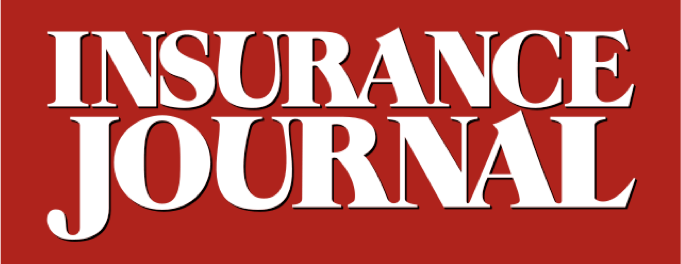With a combined ratio of 89.1 for third-quarter 2025, the U.S. property/casualty insurance industry had its best quarter in at least a quarter of a century—and maybe longer, S&P Market Intelligence said.
In a research report titled, “For U.S. P/C insurers, it just doesn’t get any better than this,” analysts Tim Zawacki and Husain Rupawala said the 89.1 combined ratio was lower than any which the firm has on record for 98 quarters—dating back to the start of 2001. The closest were a 90.7 recorded for third-quarter 2006 and 91.0 in first-quarter 2006.
The combination of a benign period of catastrophe losses and strong results in the auto and homeowners lines were key factors driving the result, the report said, also flagging a new low level for the industrywide loss adjustment ratio.
Looking forward, they said that “slowing top-line growth, mixed macroeconomic prospects and the inevitability” that the higher levels of catastrophe losses will return “create the potential that the third quarter’s result will stand for the foreseeable future as the best on record.”
While S&P GMI analysts derived most of the industry results in the report by aggregating individual company statutory reports filed with the National Association of Insurance Commissioners (as of Nov. 19 for third-quarter 2025 and previously published aggregations for prior periods), they also tapped into public company historical results and analyst estimates to offer insights about catastrophe loss impacts on loss ratios.
Citing this public company information from Visible Alpha, a part of S&P GMI, the report said that while the third quarter of any year is typically the heaviest for catastrophe losses, Visible Alpha shows the third-quarter 2025 cat impact of 1.7 points compares to 7.9 points for third-quarter 2024, and a median of 6.9 points across the third quarters in the seven years extending from 2021-2027 (2026 and 2027 are analysts’ estimates).
The lack of landfalling hurricanes, however, wasn’t the only factor impacting underwriting results, the report said. Focusing on statutory results, S&P GMI reports that an LAE ratio, tracking costs incurred for defense, settlement and claims adjustment. was less than 8.8 points in third-quarter 2025—a new low for the industry.
Putting the pure loss ratio and LAE ratio together, the loss and LAE ratio was 63.3, S&P GMI said, noting that the loss ratio component by itself (54.6) was not a record. The industry achieved lower pure loss ratios in the aftermath of Hurricane Katrina in 2006 and 2007, according to S&P GMI.
The third-quarter 2025 loss and LAE ratio was exactly the same as in third-quarter 2024, based on S&P GMI’s calculations.
Individually, seven large U.S. P/C groups each generated net underwriting gains in excess of $1 billion in the third quarter of 2025, while only one U.S. P/C group, Everest Group, produced a net underwriting loss in excess of $100 million.
Related: Everest Refocusing as Reserve Charge Hits Earnings; Buying $1.2B ADC
In contrast, in third-quarter 2024, only two groups had underwriting gains exceeding $1 billion, and nine had net underwriting losses of larger than $100 million, the report said.
The seven with outsized gains in this year’s third quarter were all personal lines writers, while Everest’s results suffered from unfavorable loss development on commercial liability lines.
The report offers line-of-business insights based on direct premium and loss information from the quarterly filings comparing homeowners, auto physical damage, auto liability and commercial liability direct loss ratios for third-quarter 2025 to prior year results. Graphs in the report show trends in the loss ratios for these four lines over the most recent eight quarters. S&P GMI found, for example, that auto liability loss ratios have been creeping up recently and that commercial liability quarterly loss ratios have risen (year-over-year) over a longer period of time.
In addition, the authors highlighted one particularly notable result for another line of business: workers compensation. The third-quarter 2025 direct incurred loss ratio for workers compensation was 52.5—the highest third-quarter result since 2017, they said.
Referring to the “modest deterioration” in the workers comp line that “bears watching,” the report text notes that the third-quarter loss ratio benefited from favorable reserve development recorded by California’s State Compensation Insurance Fund. According to the report, the industry result would have been 2.4 points higher without the SCIF action.
Across the industry and all lines, favorable prior-year loss development reached a new high of $5.1 billion in third-quarter 2025, compared to just $1.3 billion in third-quarter 2024, S&P GMI said.
Related: Analysis: State Farm Bolsters Surplus by Freeing Up Billions in Loss Reserves; What Progressive and GEICO Q3 Results Reveal About Auto Insurance Profit, Growth
Beyond Everest’s action, the S&P GMI report describes the restructuring of an “intra-group retrocession program” at Swiss Re Corporate Solutions America Insurance Group, involving a loss portfolio transfer with non-U.S. entities, indicating that this inflated the $5.1 billion figure. Still, even after adjusting for this, the industry’s net favorable development would come to $3.5 billion for third-quarter 2025—the largest nominal amount of favorable development for the industry in at least 15 years.
Topics USA Property Casualty
Was this article valuable?
Here are more articles you may enjoy.



 Hartford: 10-Year Analysis Shows Shifts in Common, Expensive Small-Business Claims
Hartford: 10-Year Analysis Shows Shifts in Common, Expensive Small-Business Claims  Acrisure to Buy MGA Vave From Canopius
Acrisure to Buy MGA Vave From Canopius  Abbott Presses Congress for Legal Shield Over Preemie Baby Formula Lawsuits
Abbott Presses Congress for Legal Shield Over Preemie Baby Formula Lawsuits  Tricolor Trustee Files Suit in Texas for Auto Dealer’s Collapse
Tricolor Trustee Files Suit in Texas for Auto Dealer’s Collapse 

